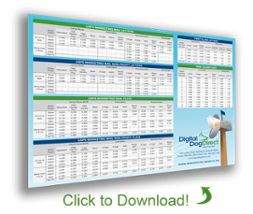
When the pandemic first hit, many marketers and brands were forced to abandon, at least temporarily, any engagement strategies that involved face-to-face or physical interaction with people and products. They shifted to email, social media, Zoom events, and other online platforms that allowed for social distancing and respected concerns about COVID-19.
This isn’t likely to change in the immediate future, especially with the latest coronavirus wave causing states to hit the brakes on reopening plans. Although new vaccines show promise, nearly two-thirds of U.S. respondents to a recent McKinsey survey are not yet engaging with normal, out-of-home activities.
This is the current reality. Instead of trying to wait out the pandemic or wondering what the “new normal” will look like, marketers and brands, especially in the B2C (business-to-consumer) space, should be focusing on strategies that engage with customers where they are right now – at home.
The Exclusivity and Tangibility of Physical Mail
While email inboxes are overflowing and social media feeds are packed with ads, the physical mailbox maintains a level of exclusivity that digital platforms can’t match. Just think about how many pieces of mail you receive in your physical mailbox each day compared to the number of emails and various types of ads on social media.
Studies have shown that people look forward to checking and going through their mail each day. Millennials in particular find direct mail to be more trustworthy, relevant, and personal than stereotypes would suggest. Logic tells us that people would be even more excited to receive mail during a pandemic when physical interactions are limited.
Direct mail allows you to literally place your brand into the hands of the customer. In addition to traditional formats like postcards and letters, brands are using direct mail to send unique packages and kits that deliver the kind of experience that would otherwise require an in-person interaction.
When integrated with online engagement as part of an omni-channel strategy, direct mail can help you stay physically and digitally visible and relevant to your audience. This allows you to grow sales and build loyalty.
How Dave’s Killer Bread Connected with Customers During the Pandemic
Dave’s Killer Bread had planned a series of live events to support the launch of organic burger buns. That plan was scrapped due to the pandemic. However, the brand pivoted to an omni-channel plan that engaged customers in their homes.
The new plan was built around National Grilling Day on July 22. Prior to that day, Dave’s Killer Bread encouraged people to sign up for its “Toaster Talk” newsletter, which then directed them to register for a free burger bun kit mailed to their home.
In 43 minutes, 10,000 of the brand’s 70,000 newsletter subscribers registered. Another 21,000 who registered late received a coupon to purchase the buns. Kits mailed to homes included product samples, coupons from partners, and a call-to-action to post photos of “killer” burgers to social media with the hashtag #DKBgrillout.
The top three recipes were featured in a Facebook Live broadcast, which attracted 13,000 viewers, with the winner receiving a year’s supply of Dave’s Killer Bread. According to pre- and post-event surveys:
- 88 percent of participants rated the buns as “awesome.”
- 71 percent planned to purchase the buns.
- 81 percent said their opinion of Dave’s Killer Brand was higher as a result of the program.
The bottom line is that the pandemic shouldn’t stop brands from engaging offline with customers at home. Look for creative solutions for in-home engagement, using direct mail to build an experience around your brand in the customer’s home.
Contact us to discuss your options, develop a strategy, and unleash the power of Digital Dog Direct.



Comments